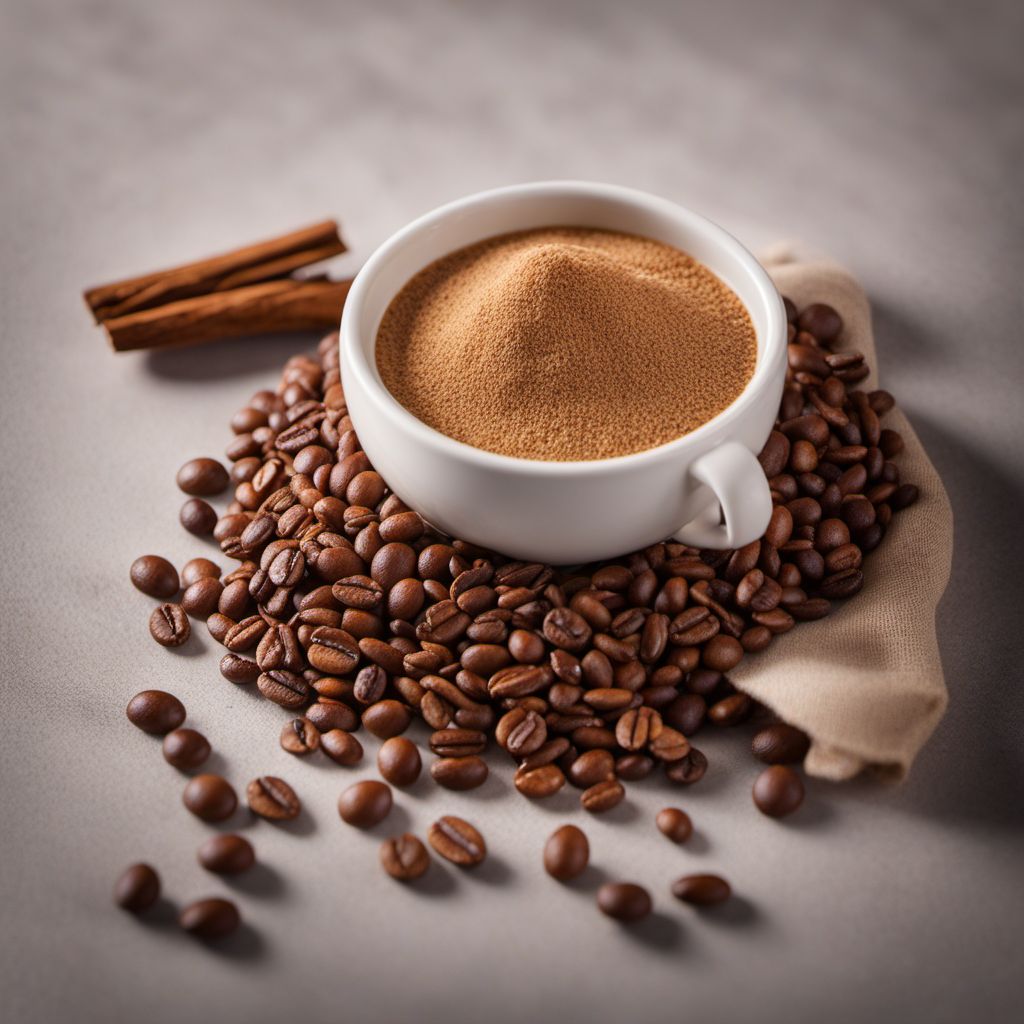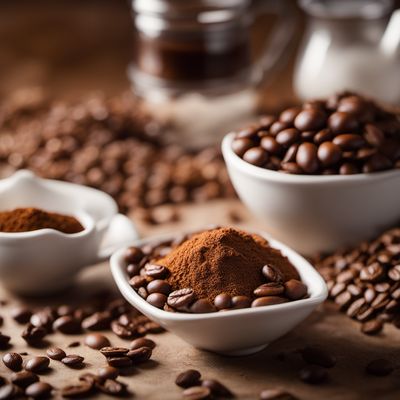
Ingredient
Malt coffee ingredient
"The Rich and Robust Brew: Unveiling the Secrets of Malt Coffee"
Malt coffee, derived from malted barley, is a finely ground powder with a deep brown color. It possesses a rich, roasted aroma reminiscent of coffee, with a slightly sweet and malty taste. The texture is smooth and powdery, allowing it to dissolve easily in liquids. When mixed with hot water, it creates a flavorful and satisfying beverage that can be enjoyed on its own or as a base for other coffee-inspired creations.
Origins and history
Malt coffee has its roots in the brewing industry, where malted barley is a key ingredient in beer production. Over time, the concept of using malted barley as a coffee substitute gained popularity, especially during times when coffee was scarce or expensive. Malt coffee has been enjoyed in various cultures around the world, with its origins traced back to Europe and the Middle East.
Nutritional information
Malt coffee is a good source of energy, providing carbohydrates and a small amount of protein. It is low in fat and contains essential minerals such as potassium, magnesium, and phosphorus.
Allergens
Malt coffee may contain gluten, making it unsuitable for individuals with gluten intolerance or celiac disease.
How to select
When selecting malt coffee, look for a reputable brand that uses high-quality malted barley. Check the packaging for any signs of moisture or clumping, as this may indicate poor quality or improper storage. Opt for organic or fair-trade options if available.
Storage recommendations
To maintain the freshness and quality of malt coffee, store it in an airtight container in a cool, dry place away from direct sunlight. Avoid exposure to moisture, as it can cause the powder to clump and lose its flavor.
How to produce
Malt coffee is typically produced by malting barley, a process that involves soaking the grains, allowing them to germinate, and then drying and roasting them. This process can be complex and time-consuming, making it more suitable for commercial production rather than home cultivation.
Preparation tips
To prepare a delicious cup of malt coffee, simply mix 1-2 teaspoons of the powder with hot water, adjusting the amount to suit your desired strength. Add milk or sweeteners if desired. Malt coffee can also be used as a flavor enhancer in baked goods, ice creams, or smoothies, adding a unique depth of flavor.
Culinary uses
Malt coffee is commonly used as a coffee substitute, offering a caffeine-free alternative with a similar flavor profile. It can be enjoyed as a hot or cold beverage, and also used as an ingredient in desserts, sauces, or marinades to add a hint of maltiness.
Availability
Malt coffee is commonly available in most grocery stores, specialty food stores, and online retailers, making it accessible to a wide range of consumers.


